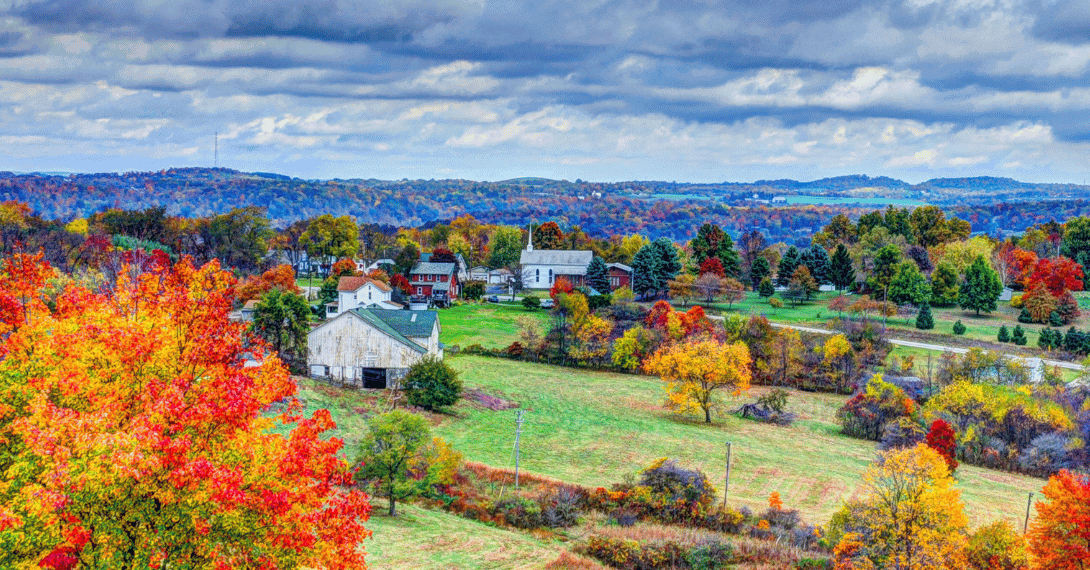Gardening can feel overwhelming. There are so many choices. One of the most common questions we hear is: What’s the difference between annuals and perennials? And which one should I plant?
Let’s break it down.
What Are Annuals?
Annuals are plants that complete their entire life cycle in one year. You plant them in the spring. They bloom through the summer. Then they die when the frost comes.
That’s it.
You’ll need to replant them every year. But in return, they give you bold, bright blooms. Fast. They grow quickly and offer color all season long.
Some common annuals include:
- Petunias
- Marigolds
- Zinnias
- Impatiens
Annuals are perfect for flower beds, containers, and borders. They’re often the stars of the show because of their non-stop color.
But remember—they’re short-lived. You’ll need to budget time and money each year to replace them.
What Are Perennials?
Perennials live for more than two years. Some live much longer—coming back every spring like clockwork.
They might bloom for a shorter time than annuals. But they return year after year. That means less planting over time.
Perennials also tend to be hardy. Once established, many need less water and care than annuals.
Popular perennials include:
- Hostas
- Black-eyed Susans
- Daylilies
- Coneflowers
They build a strong foundation in your garden. Perennials offer structure and return on investment.
But they do take a season or two to really settle in.
Key Differences
When comparing annuals vs perennials, think short-term vs long-term.
- Annuals: One season. Lots of color. Plant again next year.
- Perennials: Return each year. Less flash at first, but more value over time.
Annuals are great for instant impact. Perennials are great for building a garden that lasts.
Advantages and Disadvantages of Annuals
Annuals come with clear advantages and disadvantages, especially when planning your garden. One of the biggest benefits is instant gratification. They bloom quickly and offer a long blooming season, often from spring to the first frost. That makes them ideal for container gardening or as a filler plant to brighten up bare spots.
Annuals also allow for easy landscape design experimentation since you can try new looks and a variety of colors each year. However, they need more frequent attention.
Pruning and trimming, along with regular watering, are part of the deal. You’ll also be replanting each year, which adds to your yearly cost and time commitment. Some annuals are self-sowing, meaning they drop seeds and return on their own—but not all. And unlike perennials, annuals offer little to no winter interest. If you want bold color and flexibility, annuals are a great choice. Just be ready for the upkeep.
Advantages and Disadvantages of Perennials
Perennials offer both benefits and drawbacks depending on your garden goals. One big advantage is cost-effectiveness over time. While the initial cost may be higher than annuals, perennials don’t need replanting each year. Once established, many have deep root systems, which means they use less water and are more drought-tolerant. Some native perennial plants are cold-hardy and shade-tolerant, making them reliable in tough conditions. They can also help prevent erosion and support local ecosystems by providing a habitat for butterflies, birds, and bees. Many pollinator-friendly varieties bloom for a long time and add consistent color to your garden year after year.
However, perennials don’t always provide instant gratification. They often take a season or two to fill in, and they may require more attention early on to get established. Tasks like pruning and deadheading are important to keep them looking neat and healthy. While some can self-sow or be propagated by division, maintaining the right shape might involve regular pruning and trimming. They’re great filler plants in landscape design, but experimenting with layout can be slower than with quick-growing annuals. Water requirements vary by species, and even low-maintenance types may still need care in extreme weather. While some provide winter interest, others fade back until spring.
Types and Examples of Annuals and Perennials
There are many types of annuals and perennials, each with their own strengths. Annuals like petunias, poppies, vinca, and dahlias bloom fast and bring vibrant color all season, but only last one year.
Perennials, such as shasta daisies, coneflowers, peonies, daylilies, hellebores, and phlox, come back every spring and often need less care once established. Some annuals are “tender,” meaning they can’t handle frost, while “half-hardy” types like lantana can survive light chill with protection.
Perennials can also be split into hardy or container-friendly varieties, which are great if you're short on space. Whether you're planting in the ground or in pots, knowing these examples helps you choose the right mix for a beautiful, low-stress garden.
Biennials and Plants That Break the Rules
Some plants don’t follow the usual rules of gardening. They’re not annuals or perennials—they’re biennials or tricky exceptions that keep gardeners on their toes. A biennial plant grows leaves the first year, then flowers the second before dying.
Popular examples include canterbury bells, common foxglove, evening primrose, hollyhock, and sweet william. These plants need a little patience, but they reward you with bold blooms in their second year. Some can even self-sow, meaning they drop seeds and grow again on their own.
Others, like flowering tobacco and tulips, might behave differently depending on your climate or how you handle overwintering. To keep things tidy and promote healthy growth, pruning and deadheading are essential. If you want flowers every year from biennials, the trick is to stagger biennials—plant new ones each season so you always have some in bloom. These plants might not follow the rules, but they sure make gardens more interesting.
Frequently Asked Questions
This section covers common questions about annuals vs perennials, helping gardeners make smart planting decisions based on their location, garden style, and climate.
What’s the difference between an annual plant and a perennial?
Annuals bloom for one season and die, while perennials return year after year.
What are biennials?
Biennials grow foliage in the first year and bloom in the second before completing their life cycle.
Which is better for cold regions?
Hardy perennials are often better suited for cold regions because they can survive freezing winters.
Can I plant winter annuals in warm climates?
Yes, in warm climates, winter annuals can thrive during the cooler months and bloom beautifully.
How does fertilizing help?
Regular fertilizing supports blooming and overall health for both annuals and perennials.
What if there are gaps in blooming?
Mix plants with different bloom times or combine annuals and perennials to fill seasonal gaps.
How do I make garden maintenance easier?
Choose native plants that are adapted to your local environment and require less care.
What Should You Plant?
The answer? Both.
Many gardens combine annuals and perennials. This gives you color now and year after year. Use perennials to fill the space. Add annuals for splashes of color.
It’s all about balance.
Think of perennials as your backbone. They shape the garden. Then add annuals to fill in the gaps. You can even switch up your annuals each year for a fresh look.
Final Thoughts
When it comes to annuals vs perennials, the best choice depends on your goals, time, and budget. Annuals give you fast, bold color but only last one season. Perennials take longer to establish but come back year after year. Most gardeners find success by mixing both. That way, you enjoy immediate blooms and long-term structure.
Think about how much sun your yard gets, how much time you want to spend gardening, and whether you want to replant each year. If you're not sure where to start, Strobert Tree Services is here to help. From planting advice to certified arborist care, we can guide you through every season.
Call 1-800-TREE-SERVICE to speak with an expert today. Let’s grow something great together.











